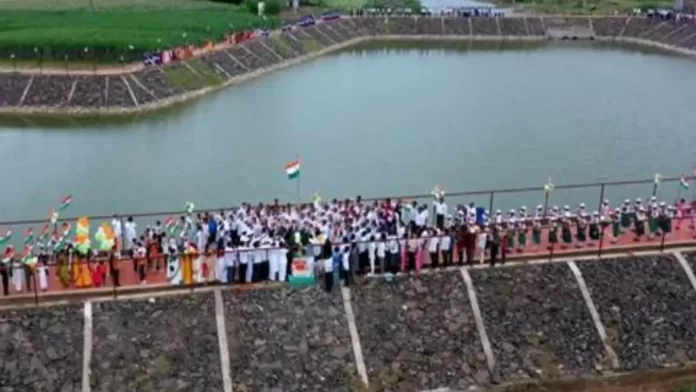Construction of more than 25,000 Amrit Sarovars have been completed within the 6 months of the launch of Mission Amrit Sarovar.
A target has been set to build 50,000 Amrit Sarovars by 15th August, 2023. As on 17th November, 2022 about 90,531 sites have been identified for the construction of Amrit Sarovars, out of which work has been started on 52,245 sites.
This number reflects the collective commitment towards rainwater conservation in the form of Amrit Sarovars.
Mission Amrit Sarovar
Mission Amrit Sarovar was launched on 24th April, 2022 with the resolve to build 75 Amrit Sarovars on the call of Prime Minister Shri Narendra Modi in every district of the country during the 75th year of independence as a part of Azadi ka Amrit Mahotsav, to overcome the water crisis in rural areas of the country.
Mission Amrit Sarovar is a mission based on a ‘Whole of Government’ approach, in which The Ministry of Rural Development along with the Ministry of Jal Shakti, Ministry of Panchayati Raj and Ministry of Environment, Forest and Climate Change, Government of India are working together with technical collaboration of Bhaskaracharya National Institute of Space Applications and Geo-Informatics (BISAG-N)
Role of Peoples Participation
Jan Bhagidari’ is at the heart of Mission Amrit Sarovar, therefore, it involves people’s participation at all levels.
Since the beginning of the mission, the foundation stone of Amrit Sarovar has been laid by freedom fighters and their families or families of martyrs or Padma awardees or the oldest person of the gram panchayat.
Commemorative plantation of trees such as neem, peepal, banyan etc. has been carried out at Amrit Sarovar sites through public participation.
In view of this, on 15 August, this year, Independence Day was celebrated and the tricolor was hoisted at Amrit Sarovar sites in the presence of villagers and public representatives and various programs were organized.
The rural economy will also be strengthened by the construction of multi-purpose Amrit Sarovars.
It will enable fish farming, cultivation of Fox Nut in the lake and allow higher production of food grains due to an adequate irrigation system.
